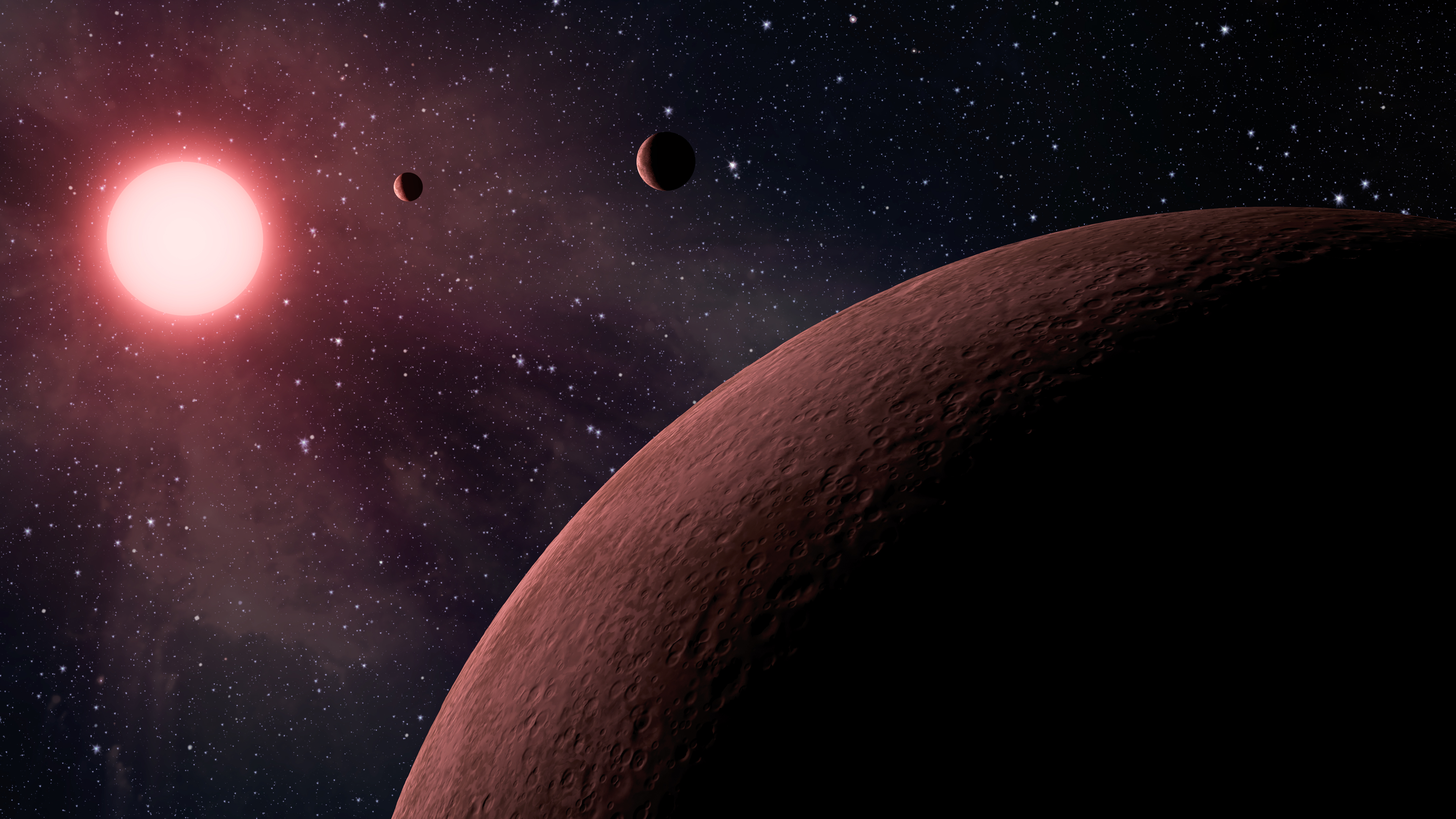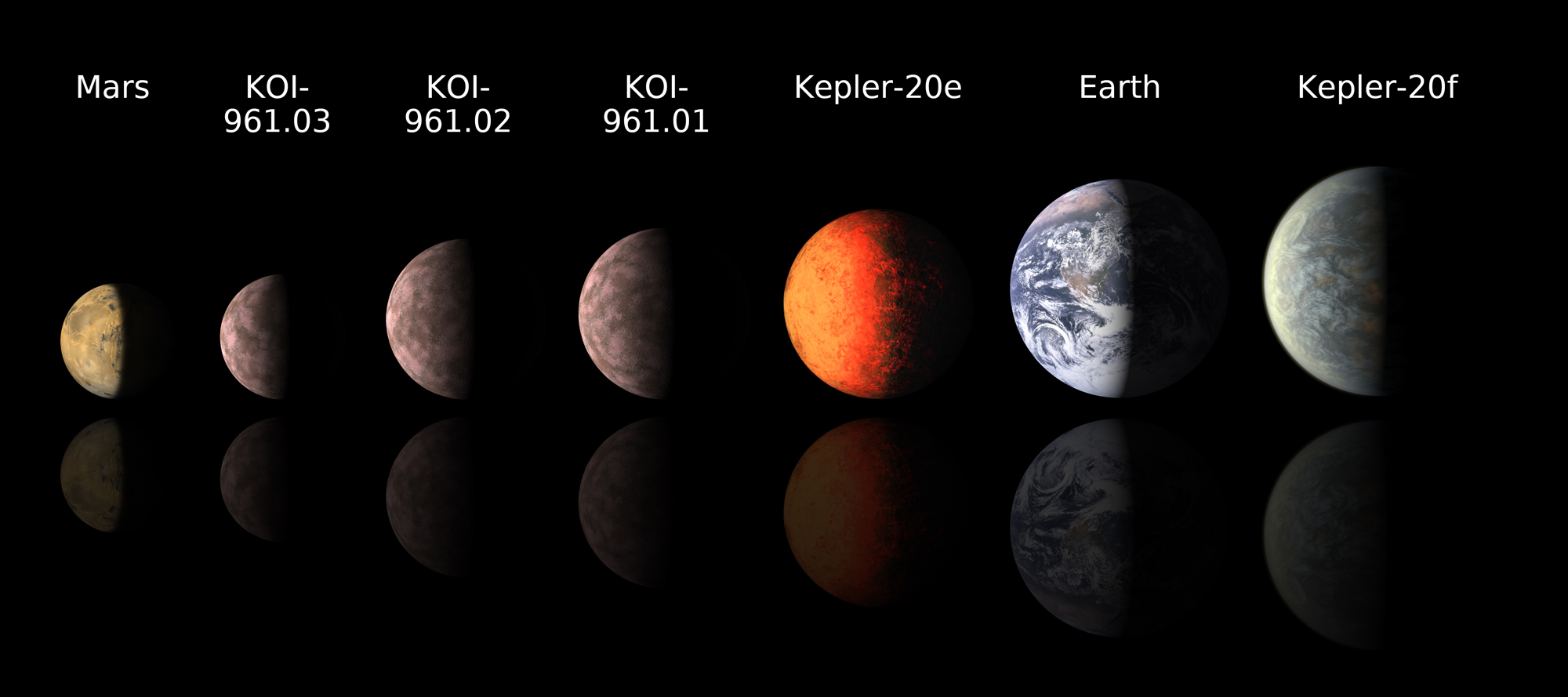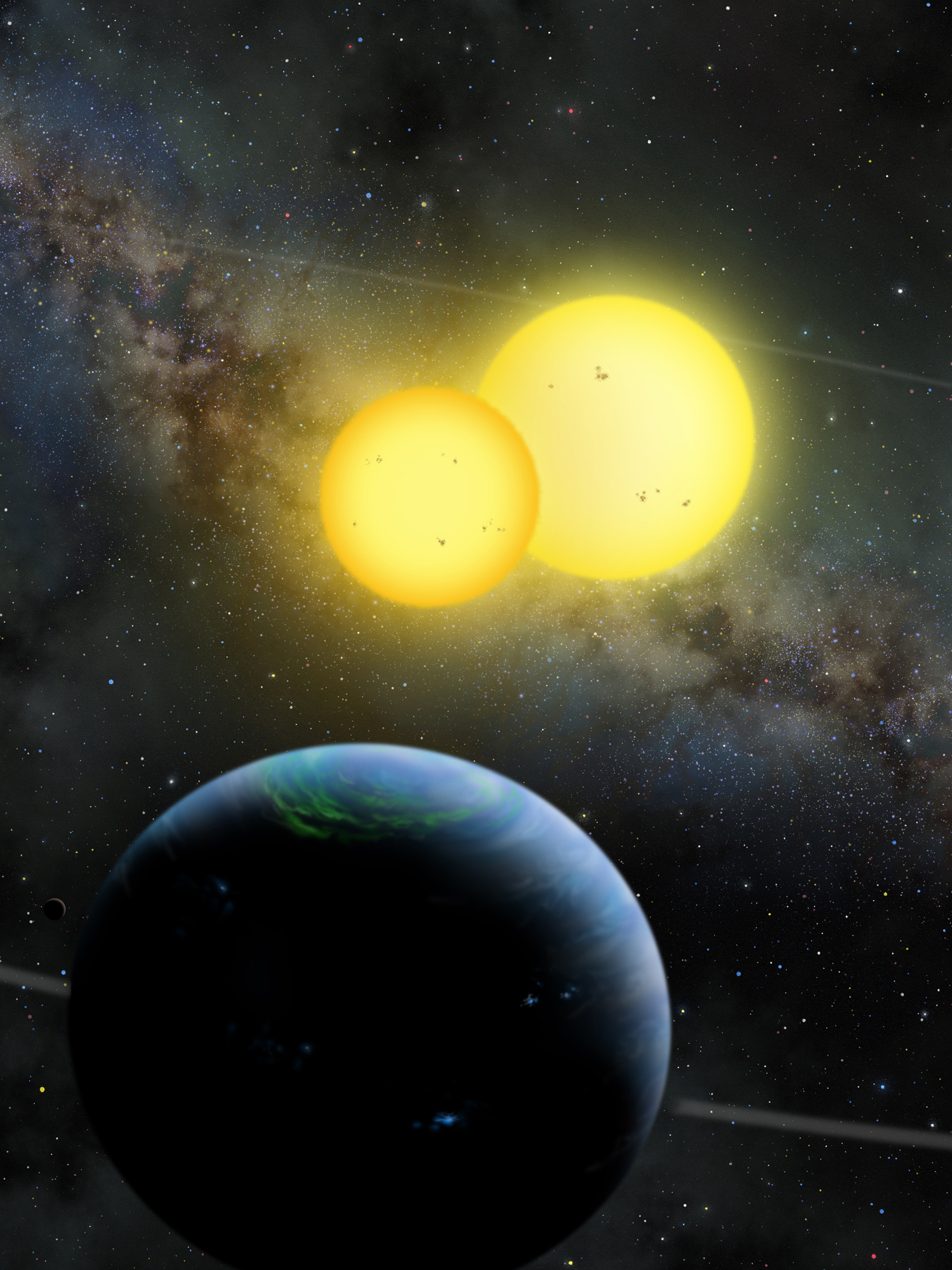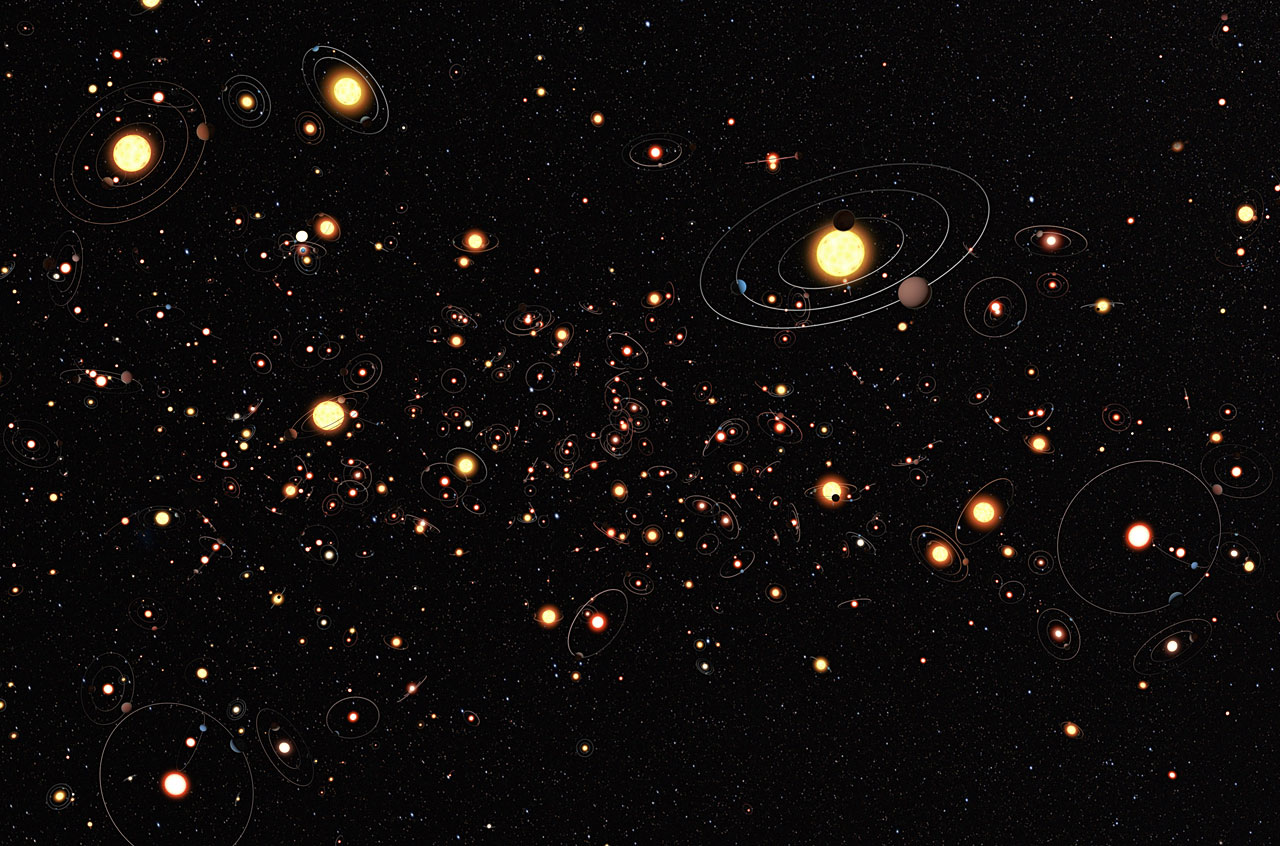Smallest Alien Planets, Real-Life 'Tatooines' Highlight Huge Week of Exoplanet Finds

AUSTIN, Texas — The ongoing hunt for planets beyond our solar system turned up some big results this week.
One team of researchers found the three smallest alien planets yet detected, and another group announced two new worlds orbiting double-star systems — the real-life incarnations of the fictional planet Tatooine from "Star Wars." Further, yet another study determined that our Milky Way galaxy likely harbors at least 160 billion exoplanets.
The smallest known exoplanets orbit a single star, called KOI-961, which is located about 120 light-years away. The smallest world in the three-planet system is roughly the size of Mars, researchers said.
"This is the most compact system of planets," said John Johnson, of the California Institute of Technology in Pasadena. "It's like you have a shrink raygun and set it to seven times smaller and zapped a planetary system." [Gallery: The Smallest Alien Planets]
The system's host star is also compact — only 70% larger than Jupiter, which makes it similar in scale to the gas giant and its natural satellites.
"It's actually more similar to Jupiter and its moons in scale than any other planetary system," Johnson said in a statement. "The discovery is further proof of the diversity of planetary systems in our galaxy."
The smallest-exoplanet and "Tatooine" finds were announced Wednesday (Jan. 11) here at the 219th meeting of the American Astronomical Society. The study estimating the huge number of alien planets in our galaxy was reported online Wednesday in the journal Nature.
Get the Space.com Newsletter
Breaking space news, the latest updates on rocket launches, skywatching events and more!

The smallest alien planets
Although the three newfound small planets are thought to be rocky worlds, they orbit too close to their star to be in the system's so-called habitable zone. This is a region around the host star where temperatures are not too hot and not too cold — just right for liquid water to exist on a planet's surface.
Yet the discovery could indicate that similar rocky-planet systems could be more common than previously thought, researchers said.
"These types of systems could be ubiquitous in the universe," Philip Muirhead, the study's lead author from Caltech, said in a statement. "This is a really exciting time for planet hunters."
The astronomers used data from NASA's Kepler space telescope, which stares continuously at 150,000 stars in a patch of the sky. Kepler monitors these stars for slight changes in their brightness, which could be an indication of a planet crossing, or transiting, in front.
At least three transits are required before any planetary candidate can be confirmed, and follow-up observations from ground-based observatories are also used to verify results.

Real-life Tatooines
Kepler has already uncovered a bounty of alien worlds, including the first Earth-size planets orbiting a sun-like star and the first confirmed exoplanet to circle two suns. And now the instrument has found two more of these Tatooine-like worlds.
This most recent discovery shows that such "circumbinary" systems could be abundant in our galaxy, researchers said. [Gallery: The Strangest Alien Planets]
"This really establishes a whole new class of planetary system," said study leader William Welsh, an astronomer at San Diego State University. "Furthermore, we can estimate that the number of these systems in our galaxy is going to be up into the millions."
The newfound planets, called Kepler-34b and Kepler-35b, are gaseous worlds roughly the size of Saturn. Kepler-34b circles its two sun-like stars once every 289 days, while Kepler-35b orbits its pair of smaller stars every 131 days.
"They're too close to their star and too hot to be in the habitable zone," Welsh said. "But they're intriguingly close."
The Kepler-34 and Kepler-35 star systems are located about 4,900 and 5,400 light-years away, respectively, making these among the most distant alien planets found, the researchers said.
The study was also published in the Jan. 12 issue of the journal Nature.

Hundreds of billions of alien planets
A third research team, led by Arnaud Cassan of the Paris Institute of Astrophysics, used a technique known as gravitational microlensing to estimate how many alien planets may be circling the 100 billion or so stars in our galaxy.
Microlensing takes advantage of the fact that the gravitational fields of foreground stars bend the light from faraway stars before it reaches Earth. By studying this bent light, scientists can infer many characteristics of the foreground stars — including, in some cases, whether they host any alien planets.
Cassan and his colleagues analyzed six years' worth of microlensing data and determined that each star in the Milky Way likely hosts at least 1.6 planets. That puts the number of alien planets in the galaxy at 160 billion or more — perhaps much more, since a different microlensing study last year estimated that free-flying "rogue" planets likely outnumber "normal" alien worlds with obvious host stars by a large margin.
"This statistical study tells us that planets around stars are the rule, rather than the exception," Cassan told SPACE.com in an email. "From now on, we should see our galaxy populated not only with billions of bright stars, but imagine them surrounded by as many hidden extrasolar worlds."
The results appear in the Jan. 12 issue of the journal Nature.
The search for alien planets is a vibrant and growing field, and we should expect more big discoveries in the future, researchers say.
"Anybody who has been an astronomer for a long time would not claim that we've run out of new techniques," said Virginia Trimble, a professor of physics and astronomy at the University of California, Irvine. "There will surely be neat, new stuff the next year, and the year after that."
SPACE.com senior writer Mike Wall (@michaeldwall) contributed to this story. You can follow SPACE.com staff writer Denise Chow on Twitter @denisechow. Follow SPACE.com for the latest in space science and exploration news on Twitter @Spacedotcom and on Facebook.
Join our Space Forums to keep talking space on the latest missions, night sky and more! And if you have a news tip, correction or comment, let us know at: community@space.com.

Denise Chow is a former Space.com staff writer who then worked as assistant managing editor at Live Science before moving to NBC News as a science reporter, where she focuses on general science and climate change. She spent two years with Space.com, writing about rocket launches and covering NASA's final three space shuttle missions, before joining the Live Science team in 2013. A Canadian transplant, Denise has a bachelor's degree from the University of Toronto, and a master's degree in journalism from New York University. At NBC News, Denise covers general science and climate change.









